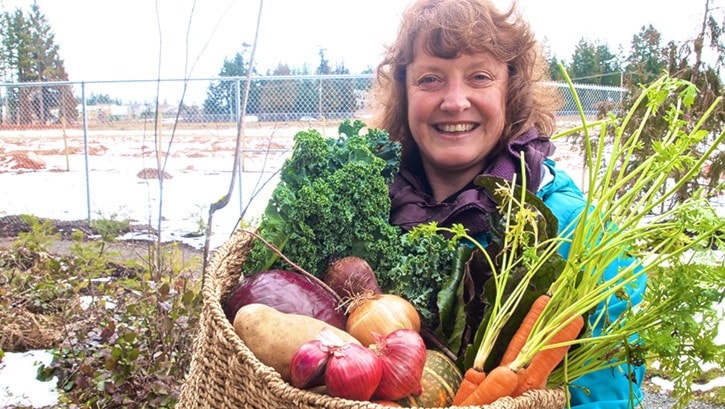Building the economy in Comox Valley, offering better food to the hospitals and helping the carbon footprint are just three benefits to an opportunity for Comox Valley farmers.
Business development consultant Sandra Hamilton knows a thing or two about B.C.’s economy. Hamilton is the former business manager for John Furlong, CEO of the Vancouver 2010 Olympic Winter Games.
Hamilton realizes there is a problem with the economy in the Comox Valley, and she said there are big challenges in local agriculture.
“When I talk about agriculture infrastructure being lost, I am paraphrasing the farmers who talk about the loss of a local distribution hub. The decline in our local markets are due to the increased access to a more global food systems and has reduced the viability of making investments in local agriculture.
“(That) limits our ability to buy new machinery, take advantage of advances in agriculture and enjoy sufficient economy of scale to compete globally.”
With new hospitals being built in Comox and Campbell River, Hamilton wants local produce to supply them.
“What I’m interested in is if we can make better use of our tax dollars to drive community development in the Comox Valley and rebuild the agricultural infrastructure that we’ve actually lost.
“If we know exactly what the hospital needs year round and we strategically know what to do together with the farming community, my belief is we can be competitive.”
Hamilton wants to gather all the farmers for a meeting March 18 to discuss this opportunity. She said the transportation of food is damaging the local economy.
“More than 96 per cent of our food arrives in a refrigerator, on a truck and on a ferry. That’s crazy when you have a land mass the size of England and so few people living here.”
Hamilton said she needs the support of the farmers in the community and if they do want the opportunity to grow food for the hospitals then she will completely devote her working time to making this possible. She said the first step is research.
“If the farmers say we’re interested, we would like to ramp up agriculture in the Comox Valley then the very first thing we need to do is find out what’s the right model to increase our volume and can we increase volume at a competitive price point to the global supply chain.”
Hamilton is doing research for the project with North Island College and she is working closely with Comox valley MLA Don McRae, which she said will really help the development of the program.
Other hospitals are making the jump to local foods and it seems to be working for them, said Hamilton.
“The U.K. has got lots of examples of hospitals that have moved to a local food supply very successfully, and so does Ontario. So far they have done this to my knowledge with three hospitals economically.
“The B.C. government through the Ministry of Health is probably the biggest purchaser of institutional food in British Columbia. So it has the ability to change the supply chain.”
Hamilton believes with all the struggles facing farmers, this program will benefit everyone in the community.
“We are hopeful that the rise in demand for local food, increasing ferry and fuel costs, pressure to reduce our carbon footprint, food security concerns for the Island combined with an emerging interest in leveraging B.C. tax dollars to supply B.C. food into B.C. hospitals could be the start to a new era.”
For more information, visit www.sandrahamilton.ca.
